Jewellery designer Solange Azagury-Patridge celebrates three decades of precious wit
A new book illuminates a 30-year career of darkly fanciful high-jewellery design, and a smacker of a semi-precious hit
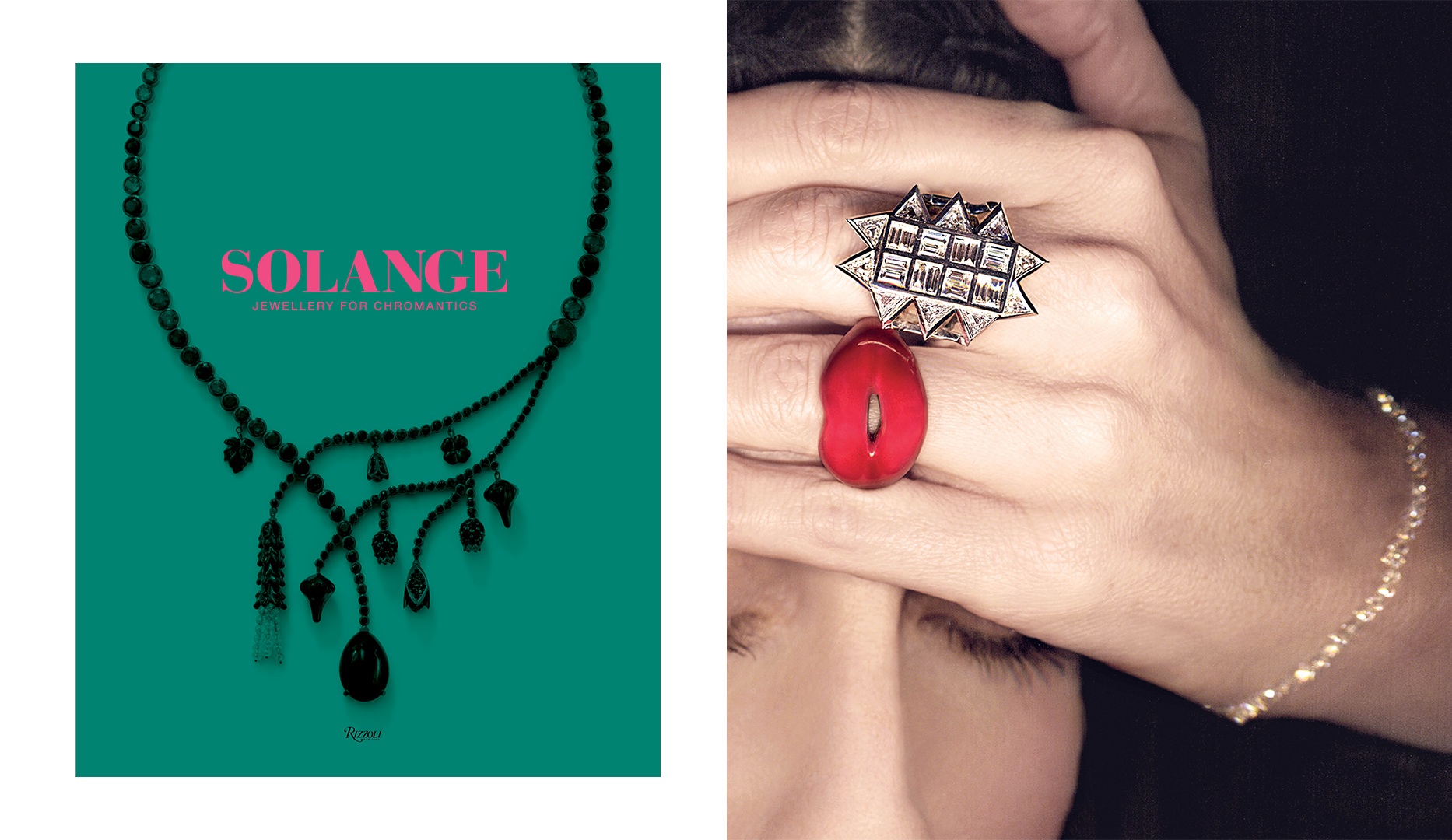
This month, Solange Azagury-Partridge, the self-confessed self-taught jewellery designer celebrates three shining decades of her eponymous brand in the first book dedicated to her career, Solange: Jewellery for Chromantics. The book traces the creative journey of the former languages student who blagged her way into the London fine jewellery scene almost by mistake.
It started with a kiss. In the mid 1990s, having become engaged to her now husband, Murray Partridge, the nascent designer decided she would create her own ring. When, at last, she held out her hand to reveal a large, rough diamond precariously perched on the side of a big, bombé-style gold band, friends and acquaintances could not get enough of it. They began asking if she might turn her eye to unique jewellery designs for them, too.
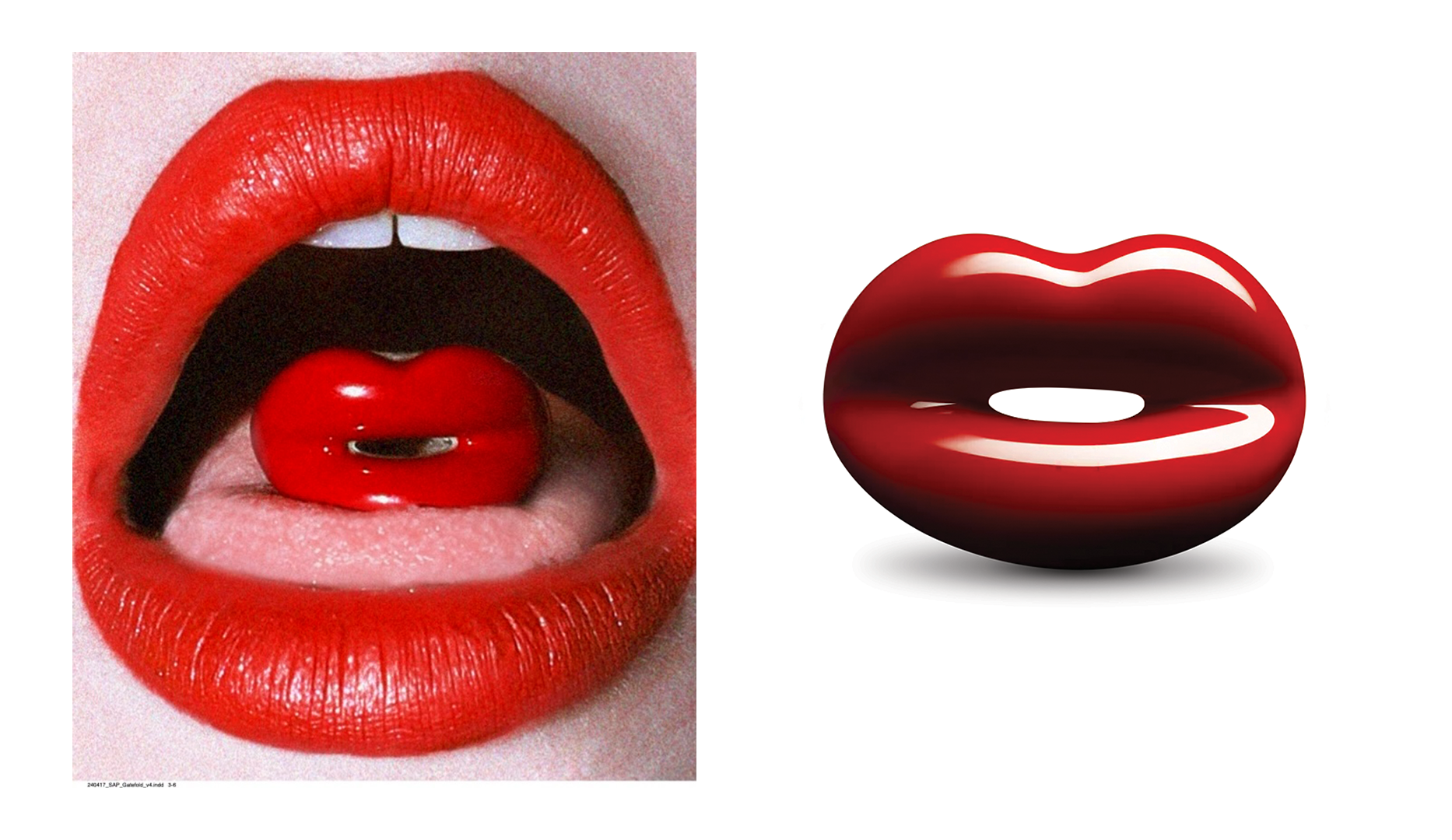
The Hotlips by Solange ring was produced at a glamorously accessible price-point
With a stint as Boucheron creative director, under the auspices of Tom Ford during his Gucci era, between 2001-2004, Azagury-Partridge has continued to innovate in her own cheeky way. Producing seriously precious topsy-turvy collections and striking one-off pieces, each is dipped in a mélange of wildly conflicting cultural references, from biblical symbolism to the thrill of visual chaos and words that harbour multiple meanings.
Today, that ‘first kiss’ has become a brand all its own. Hotlips by Solange is a gorgeously glossy ode to to the designer’s signature jewel: a chubby smacker of a kiss produced in sterling silver and enamel. There’s even a whole shop and a sweet range of merchandise dedicated to Solange’s semi-precious pout. 'Today, because I am able to produce the pieces in a more inexpensive way, Hotlips is available to everybody,' says the designer. 'That is such a pleasure for me, because my jewellery can be pretty inaccessible to most people.' Hotlips by Solange has, in turn, introduced a new generation of fans to the designer's work. It's a win-win situation for designer and jewellery lover alike because, as the designer Phoebe Philo puts it: "Solange is a true original”.
We asked her to single out three design moments in her 30 year career:
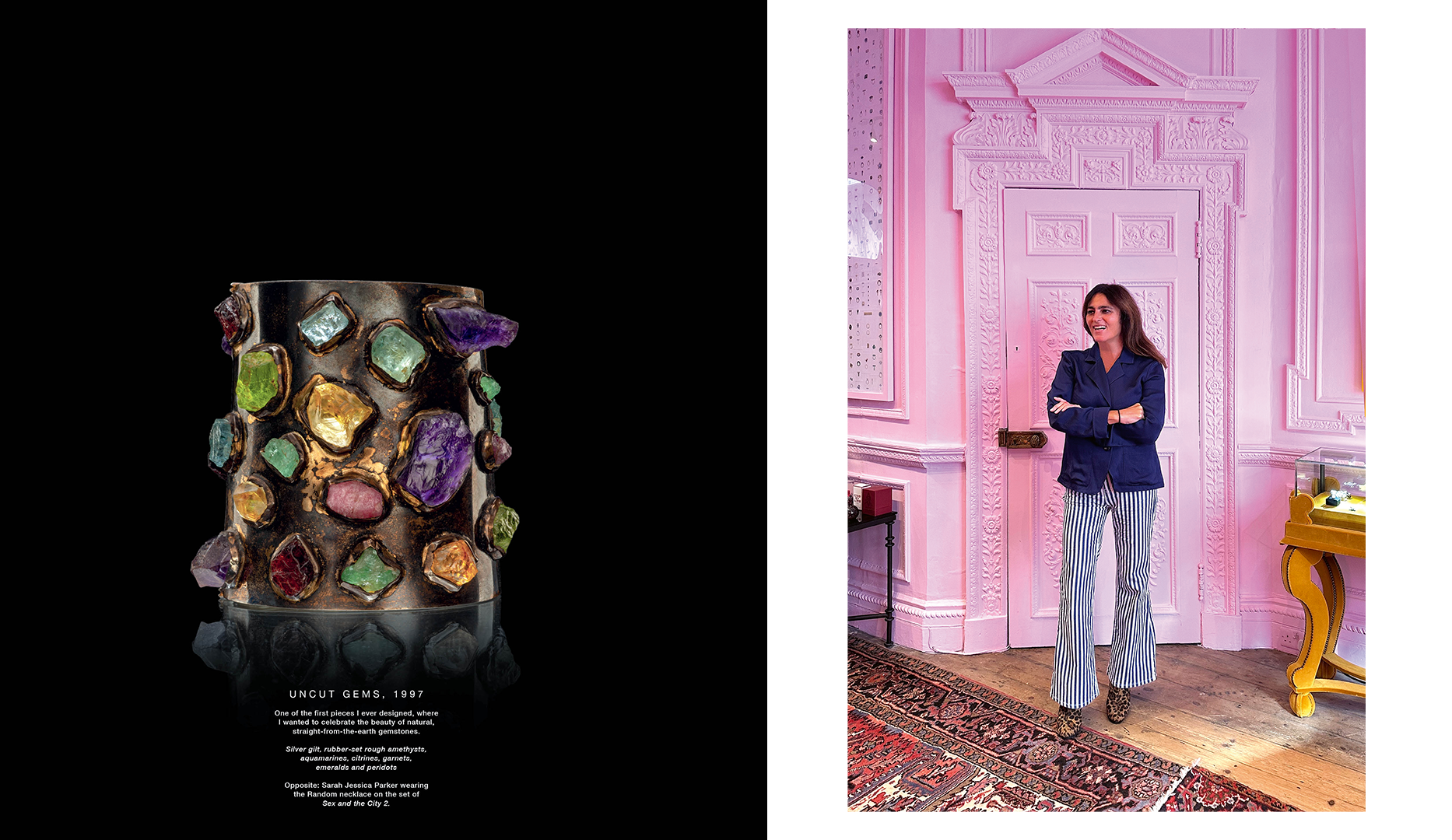
The Uncut Gems cuff from 1997; Solange Azagury-Partridge in her West London salon
Uncut Gems 1997
'My first collection featured uncut gemstones set in silver designs that I gilded because I couldn’t afford gold at the time. The look, earthy and a bit medieval, Roman, even, gave the stones a warrior-like toughness that I loved. So, this cuff, set with uncut stones straight from the earth was a big one for me. When I started designing it, I thought, “Why don’t people design with the natural shapes of the stones?”. The natural shape is just as beautiful as a man-made one, isn’t it? It has a different appeal – more chaotic, less ordered—but it’s no less beautiful. I thought I’d design jewellery with uncut gems forever. It’s one of my favorite pieces, partly because it was when I was finding my style and building confidence. Back then, I was exploring jewellery and learning as I went, looking to others before truly finding my own voice. I suppose you might say that my whole career has been an exploration, for better or worse.'
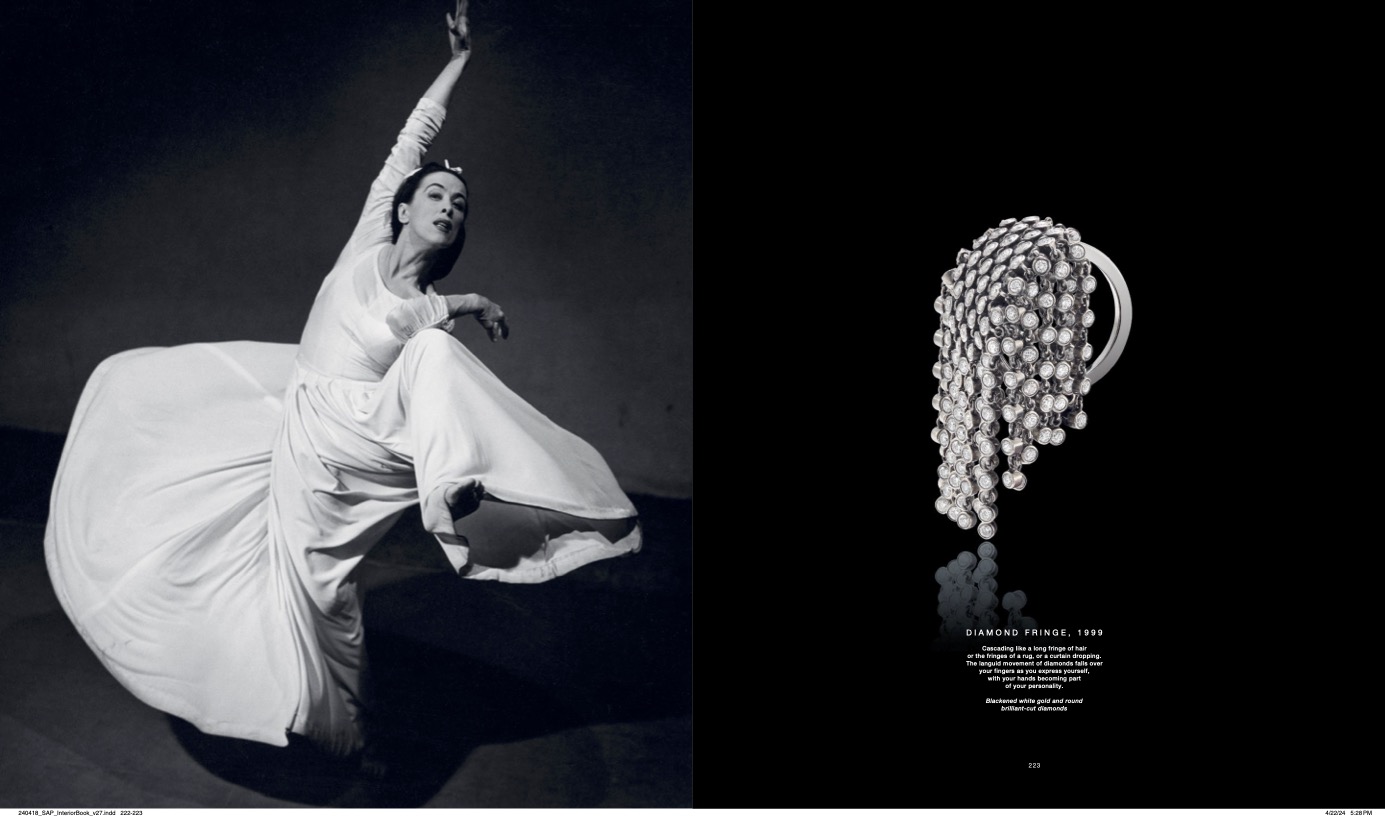
The Diamond Fringe Ring as seen in the book Solange: Jewellery for Chromatics
Kinetic 1999-present
'Kinetic pieces are hard to create, they are almost like watchmaking. When I introduced kinetics into my jewellery, it opened a whole new world to me. I first explored engineered movement in jewellery in 1999, and one of my favorite pieces is the Diamond Fringe ring. With its swingy, swishy movement, it’s so feminine and sensual, especially if you speak with your hands – your ring’s moving with you. It’s so nice to play with your jewellery, isn’t it? It’s essential. That added element makes it special. In 2017, I created my Moon and Stars Spinner ring, with a diamond ‘moon’ and rotating diamond stars, like planets, spinning around it.'
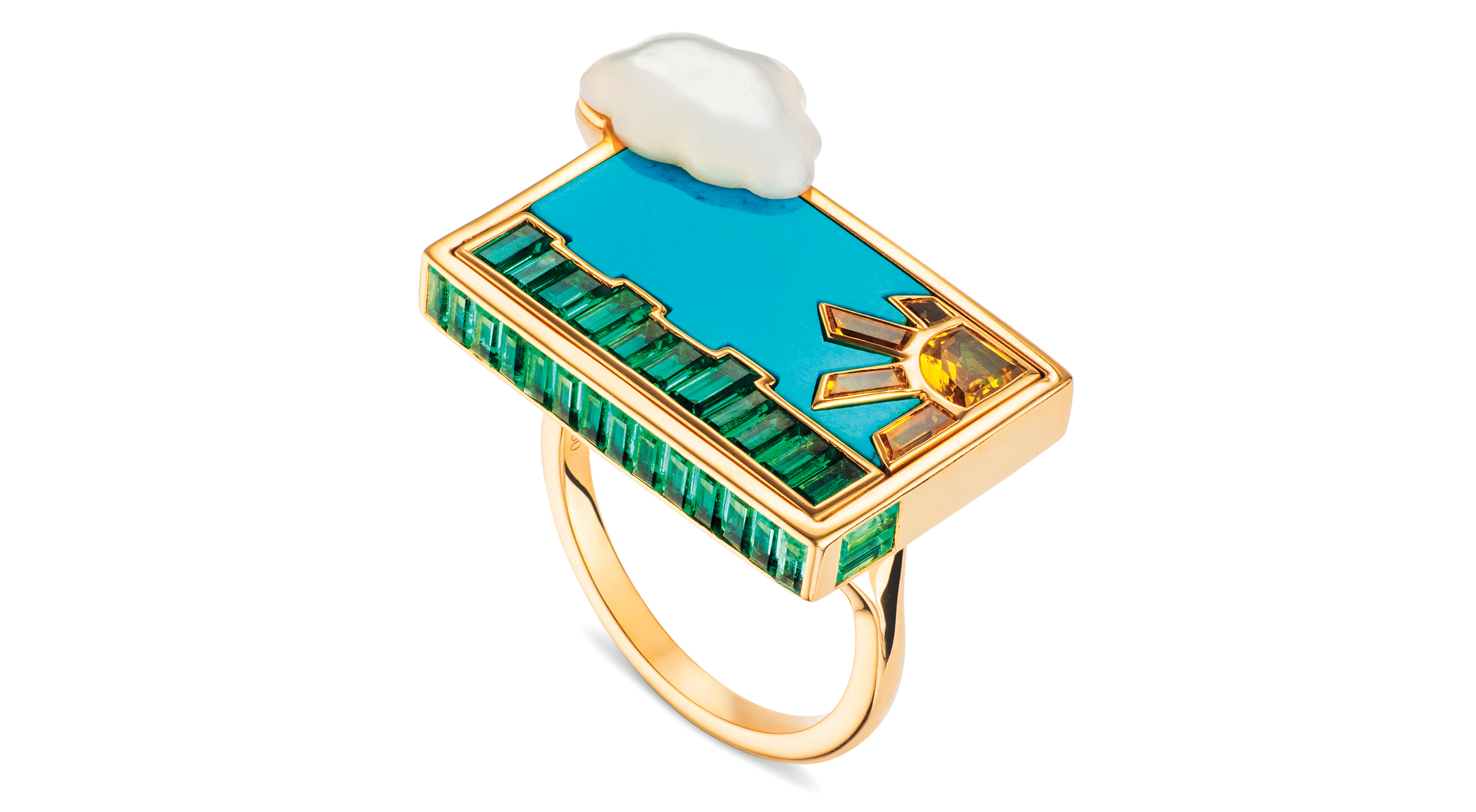
The Family Sky ring by Solange Azagury-Partridge
Family Sky, 2019
'I do these little Family tablets, and I really love them. The rings are so sweet, kind of like children’s first drawings. There’s something immersive about them. If you’re feeling down and you put a tableau ring on, you can imagine the landscape, the lovely blue sky, the green grass, the little fluffy clouds, and the sun shining. It also has an imperfect element, which I love because perfect things never appeal to me. I always end up roughing them up somehow. The colour, this turquoise, is an interesting choice for the sky. Many would use something darker, like lapis, but I don’t see it as a bright, sharp day; it’s soft and calming. To me, this ring is like a perfect English summer’s day – warm, peaceful and perfectly soothing.'
Solange: Jewellery for Chromatics;
Wallpaper* Newsletter
Receive our daily digest of inspiration, escapism and design stories from around the world direct to your inbox.
Caragh McKay is a contributing editor at Wallpaper* and was watches & jewellery director at the magazine between 2011 and 2019. Caragh’s current remit is cross-cultural and her recent stories include the curious tale of how Muhammad Ali met his poetic match in Robert Burns and how a Martin Scorsese Martin film revived a forgotten Osage art.
-
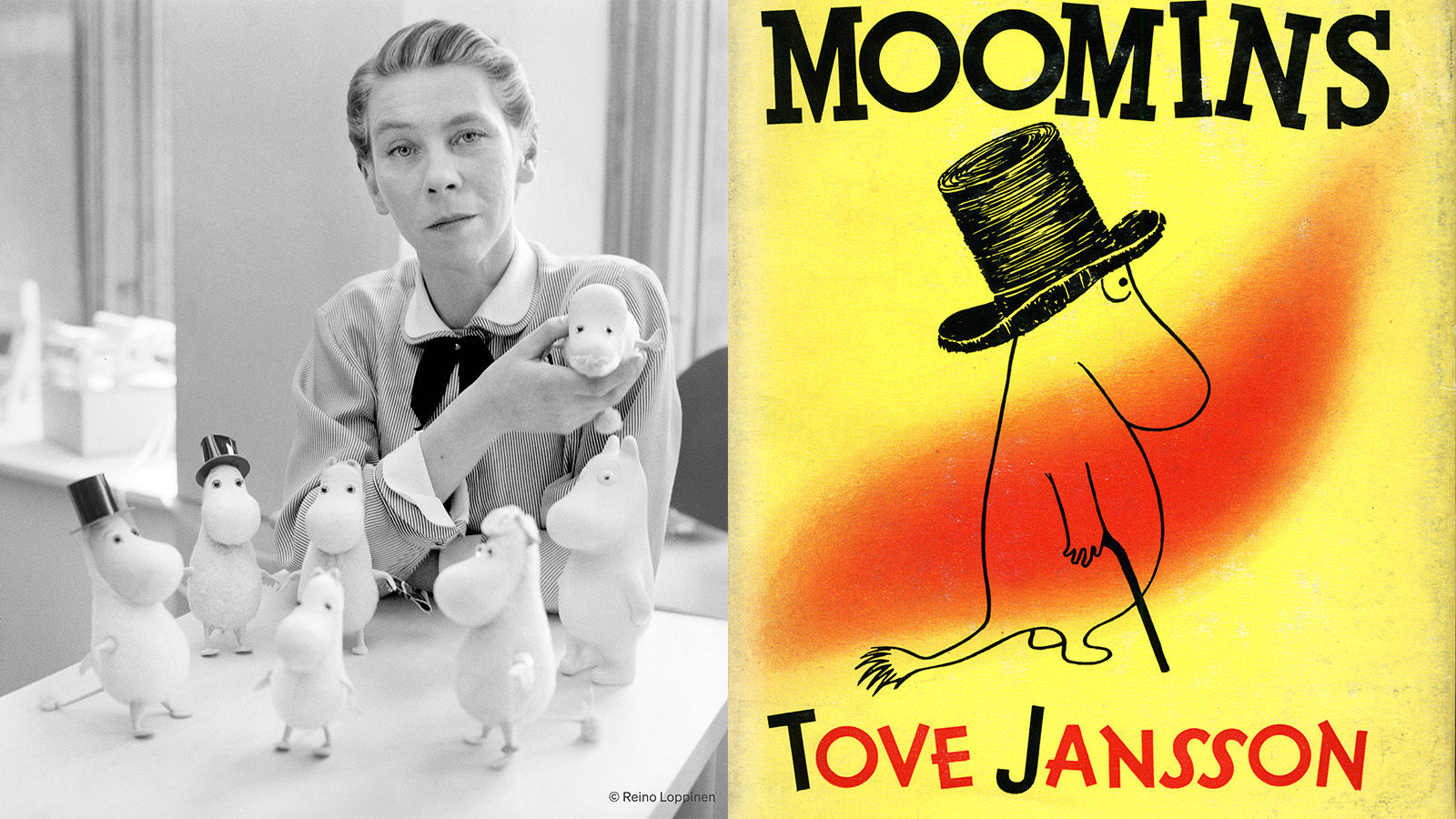 The Moomins take New York with a debut US exhibition
The Moomins take New York with a debut US exhibitionIn time for her beloved characters' 80th anniversary, the work of Finnish artist Tove Jansson will go on display at the Brooklyn Public Library
-
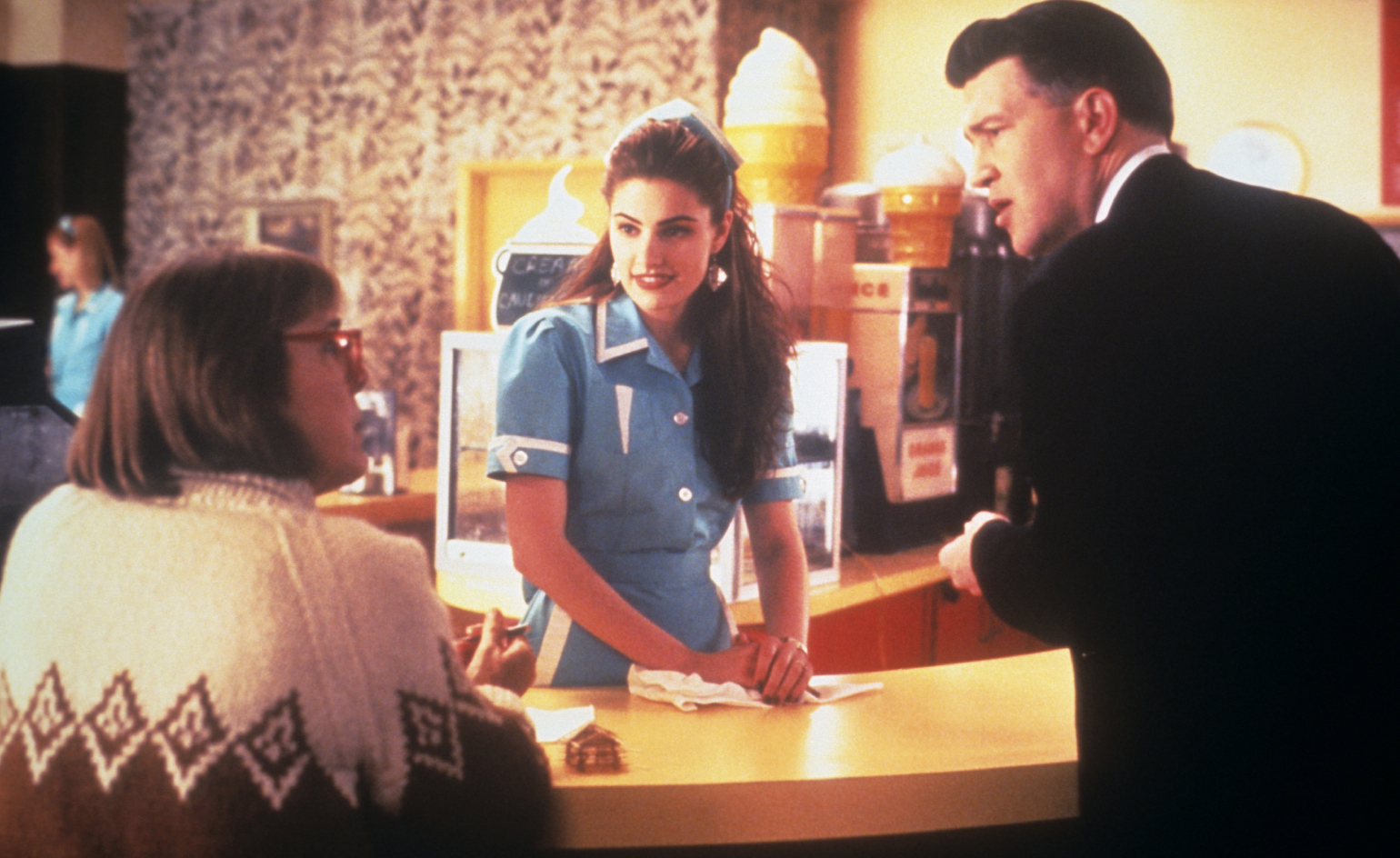 Twin Peaks’ Double R Diner is coming to London (for a day)
Twin Peaks’ Double R Diner is coming to London (for a day)Mubi marks Twin Peaks’ 35th anniversary with pop-up diner and streaming release
-
 Why are so many rooms covered in curtains?
Why are so many rooms covered in curtains?Comfort, privacy, and performance are all contained in the rooms swaddled in plush draperies
-
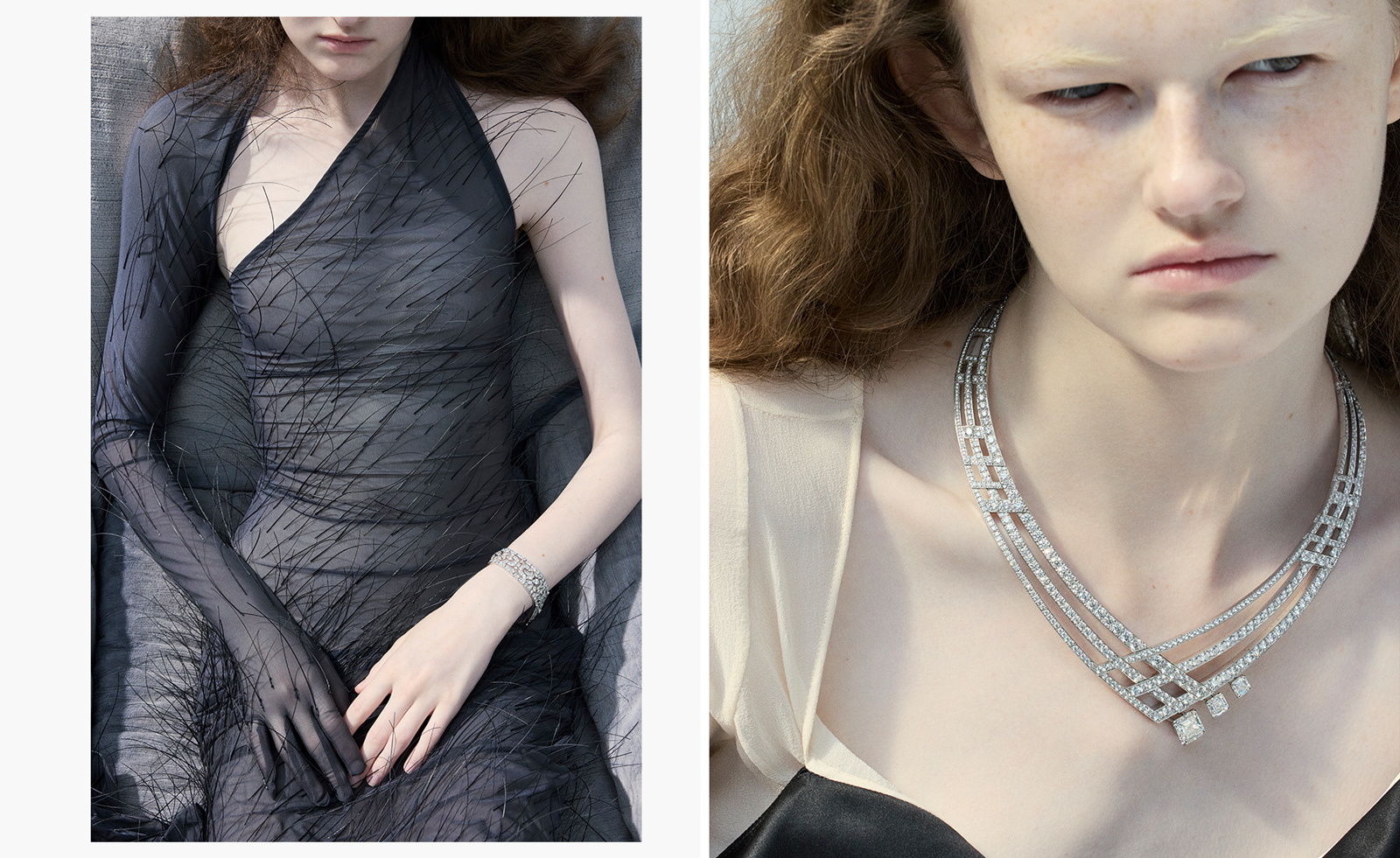 Wild beauties: high jewellery dripping with drama
Wild beauties: high jewellery dripping with dramaThe latest high jewellery collections are fantastic and flamboyant, drawing on a wealth of influences, from a Chopin composition and César Ritz to crocodiles and colour refraction
-
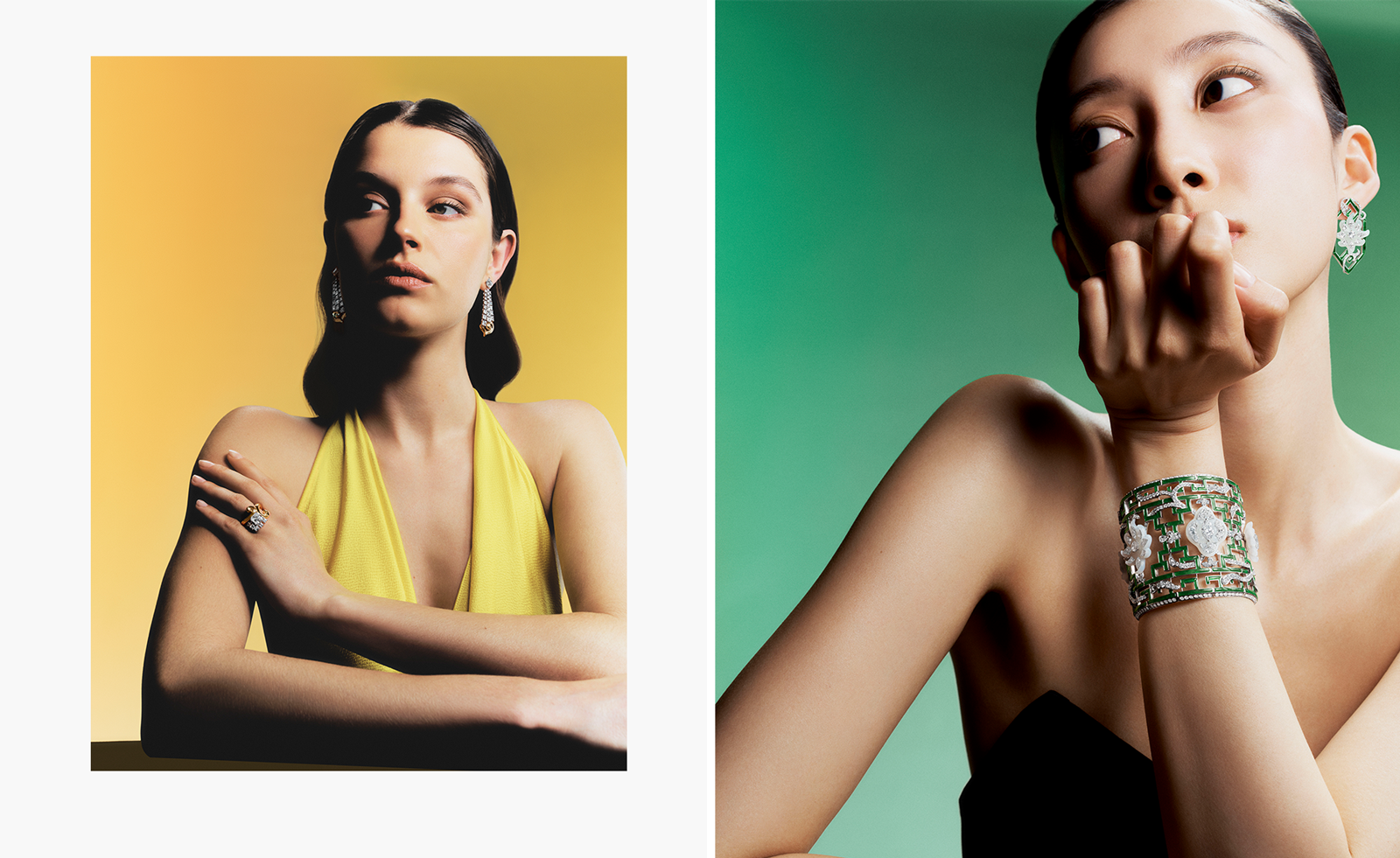 Boghossian looks to the palaces of the world for a regal high jewellery collection
Boghossian looks to the palaces of the world for a regal high jewellery collectionBoghossian's new Palace Voyages collection is inspired by royal architecture
-
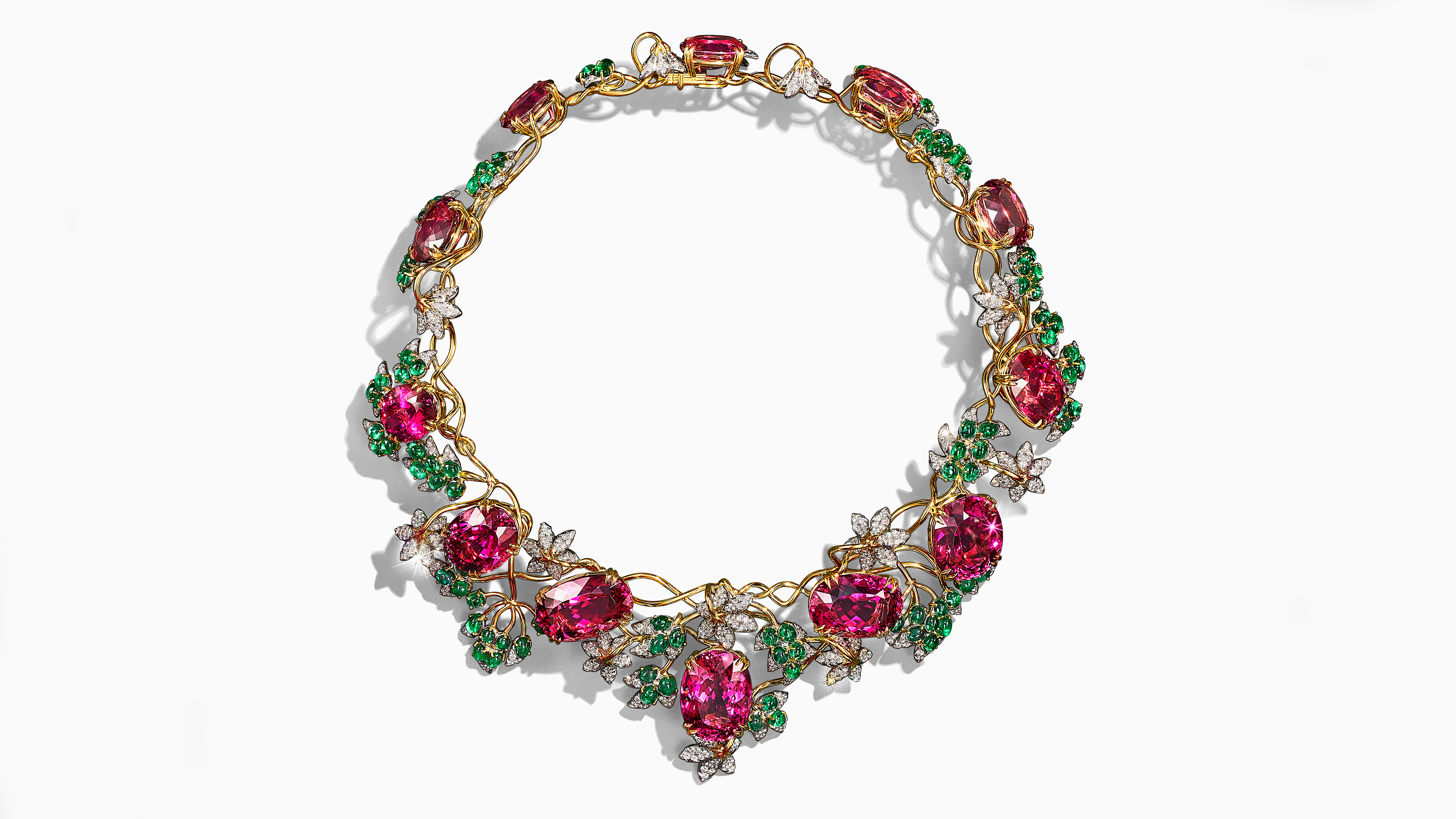 Tiffany & Co’s Blue Book ‘Botanica’ collection comes up roses
Tiffany & Co’s Blue Book ‘Botanica’ collection comes up rosesTiffany & Co draws on its heritage for delectable new jewellery collection
-
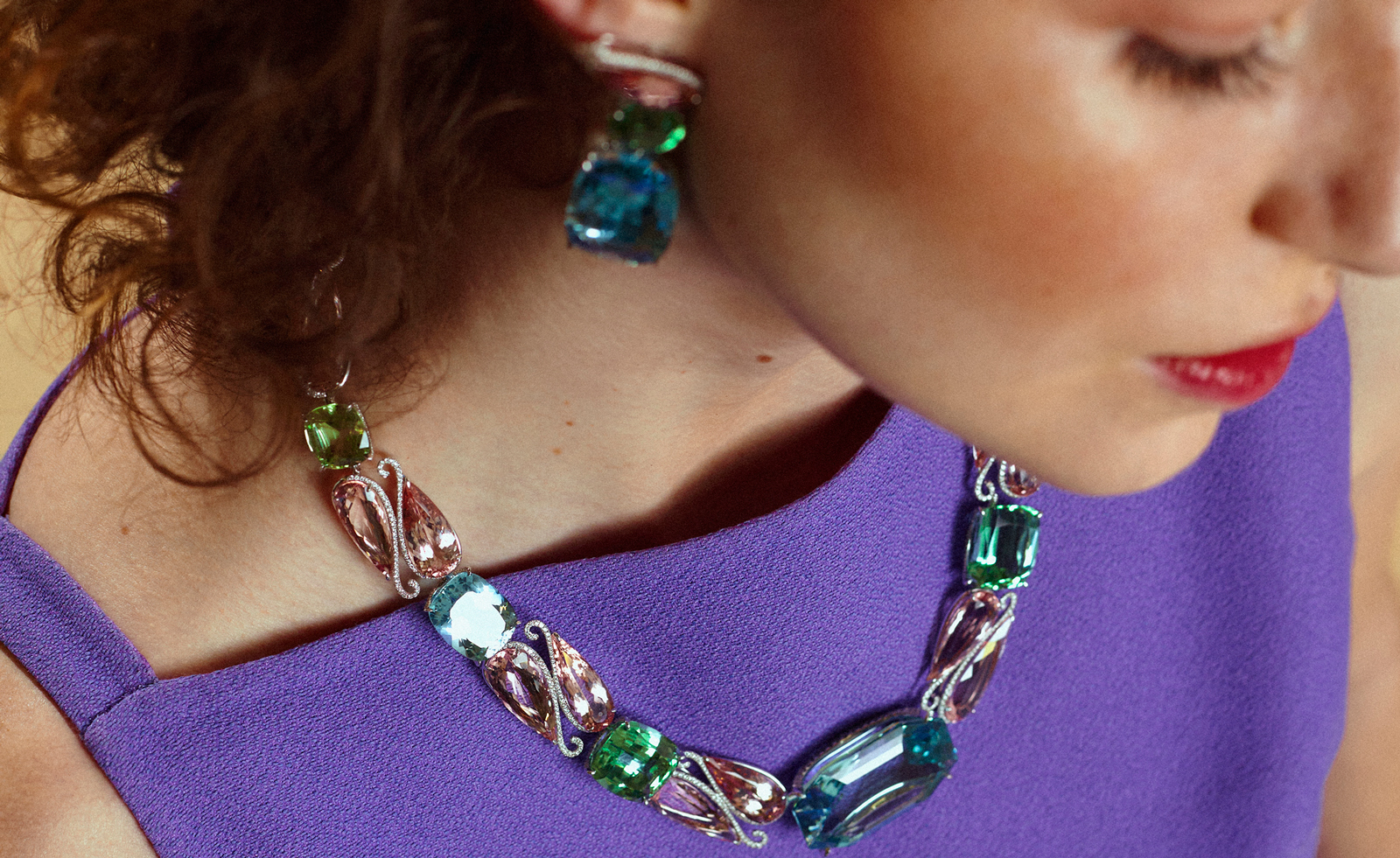 Boghossian high jewellery in sorbet shades puts us in the mood for summer
Boghossian high jewellery in sorbet shades puts us in the mood for summerBoghossian’s multicoloured gemstone and diamond high jewellery set plays on pastel hues
-
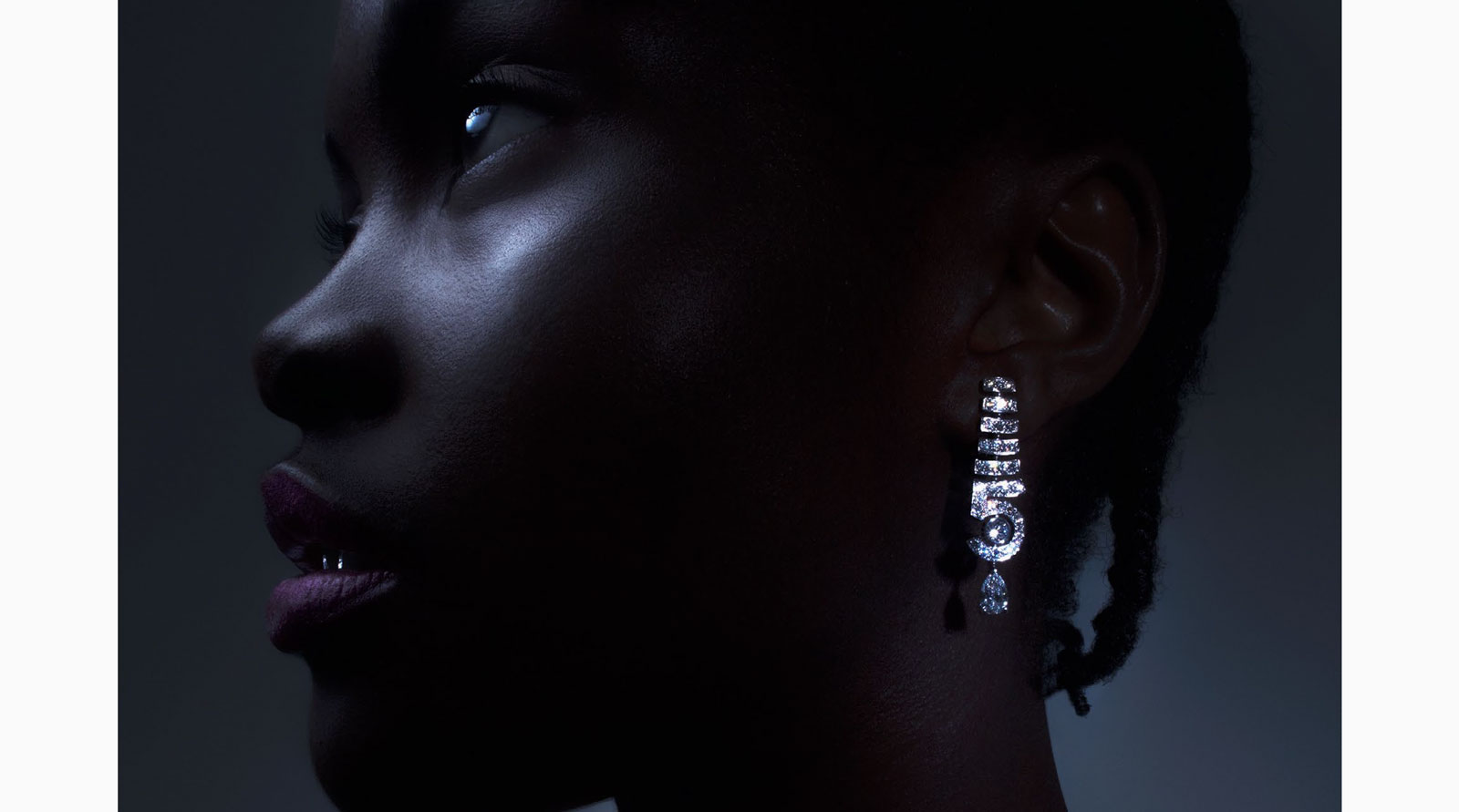 Chanel marks No.5 centenary with dazzling high jewellery collection
Chanel marks No.5 centenary with dazzling high jewellery collectionNew Chanel high jewellery nods to the design codes of Coco Chanel’s original 1932 collection, and celebrates Chanel No.5
-
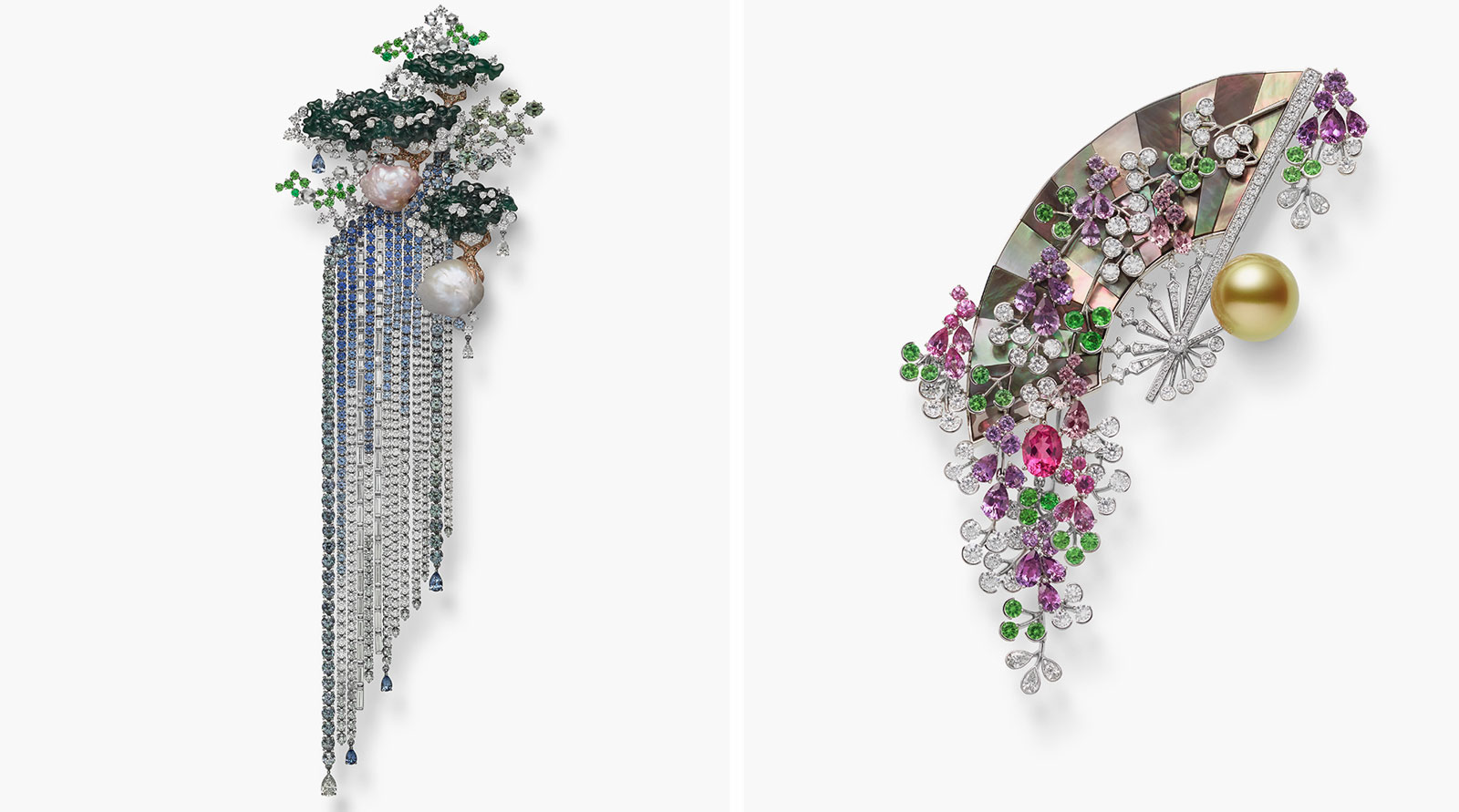 Mikimoto unveils new high jewellery collection
Mikimoto unveils new high jewellery collectionMikimoto’s new jewellery collection nods to the passing of the seasons
-
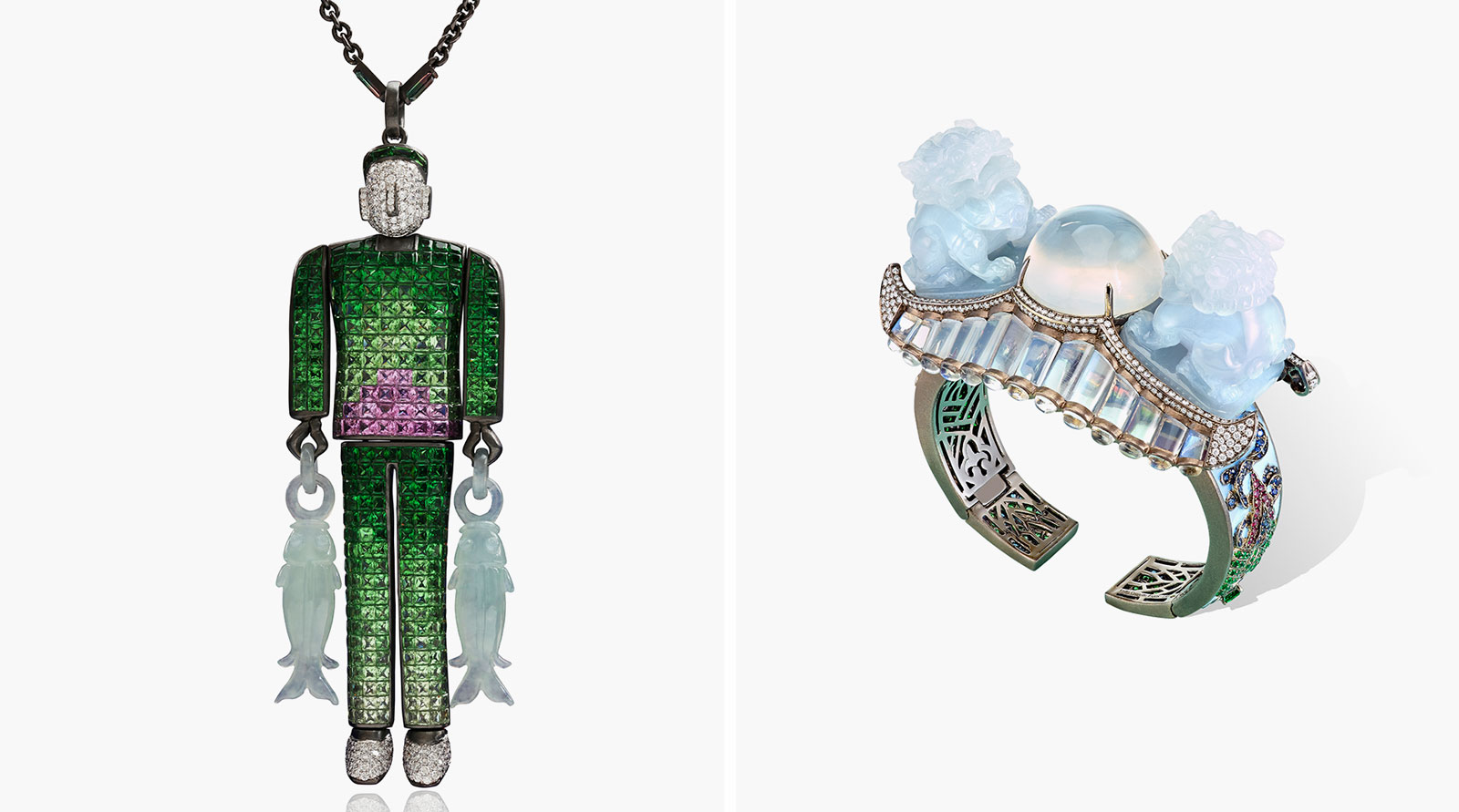 Lydia Courteille tells Chinese legends through high jewellery
Lydia Courteille tells Chinese legends through high jewelleryHigh jewellery intertwines history and myths in Lydia Courteille’s new collection
-
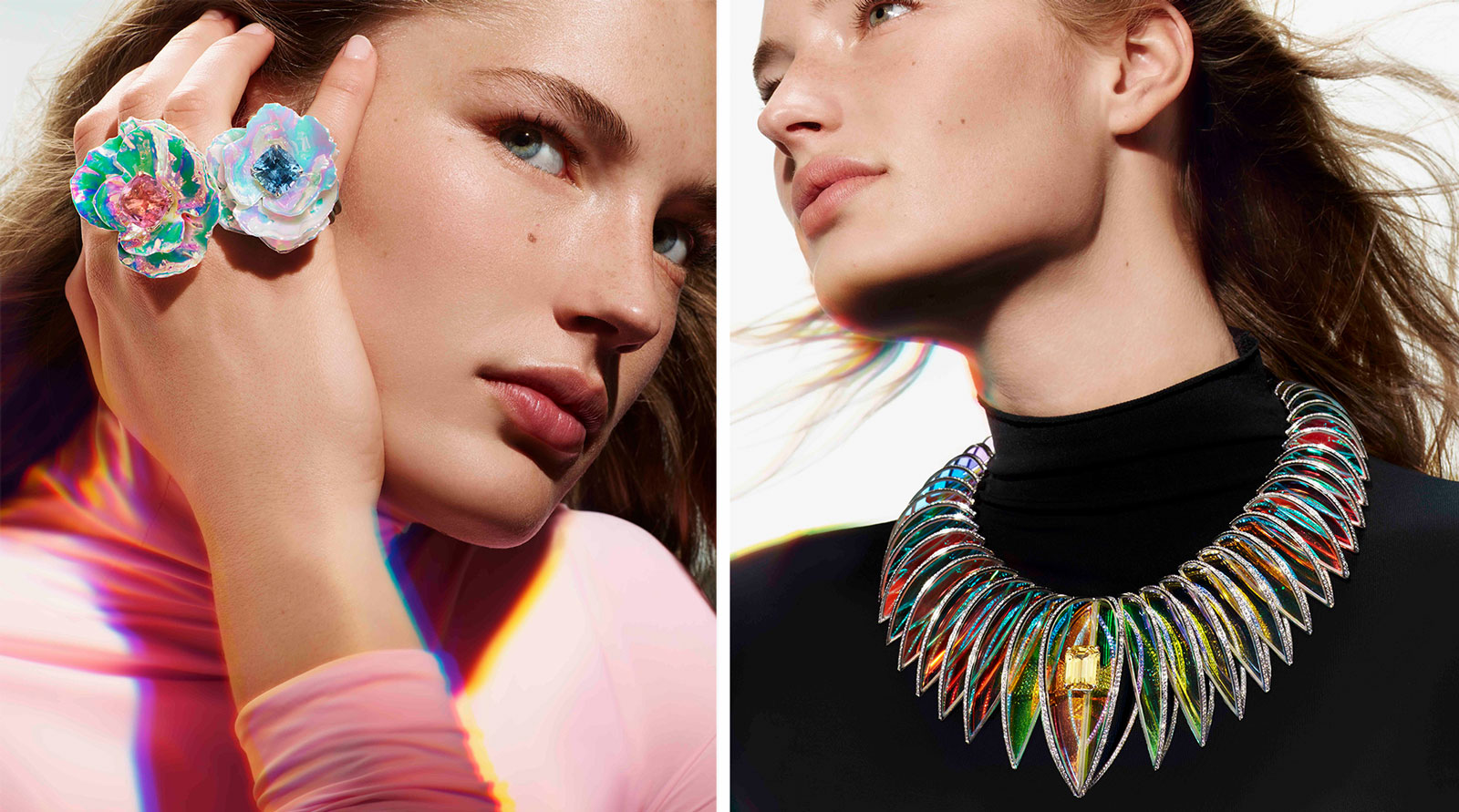 Boucheron unveils rainbow high jewellery
Boucheron unveils rainbow high jewelleryThe new high jewellery from Boucheron sees precious metals sprayed onto ceramics and rock crystal at high temperatures for holographic hues